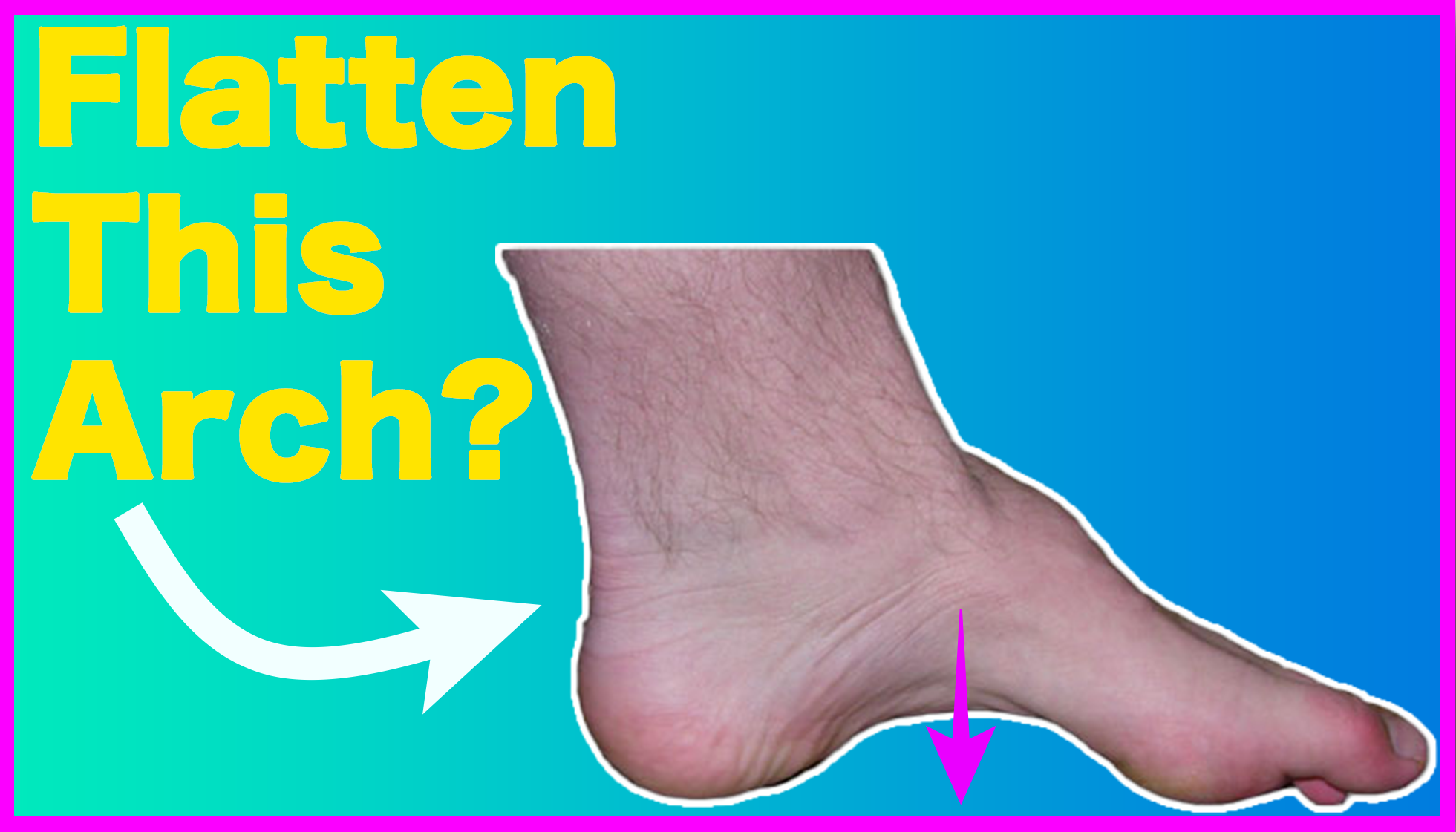Table of Contents
High arches can impact your movement. Here’s what you can do
If you…
- Have really high arches
- Grip your toes when you do challenging exercises
- Can’t feel your heels or balls of feet pushing into the ground
Then I have a simple solution for you. One that will enhance your mobility, ability to put force into the ground, and sense feeling grounded.
The best part? You won’t need to buy any extra equipment!
This post will show you a simple trick to use during common exercises and why it works so dang well.
Check out the post, video, and podcast below to learn what it is.
How high arches impact movement
High arches (pes cavus for nerdspeak) are a structural presentation where the underside of your foot is SUPER HIGH off the ground. It’s also called a supinated foot type.
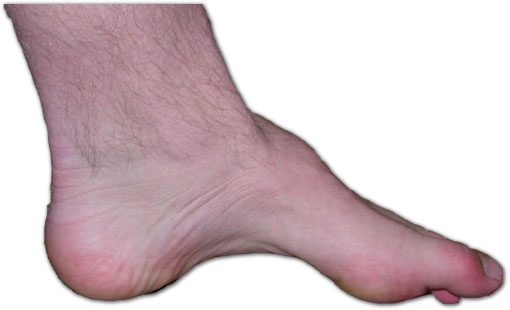
You can test to see if you have high arches by dipping your bare foot in water and putting it on a piece of paper or the ground. If your footprint shoes mostly the heel and the forefoot (front of the foot), then your arch is probably high.
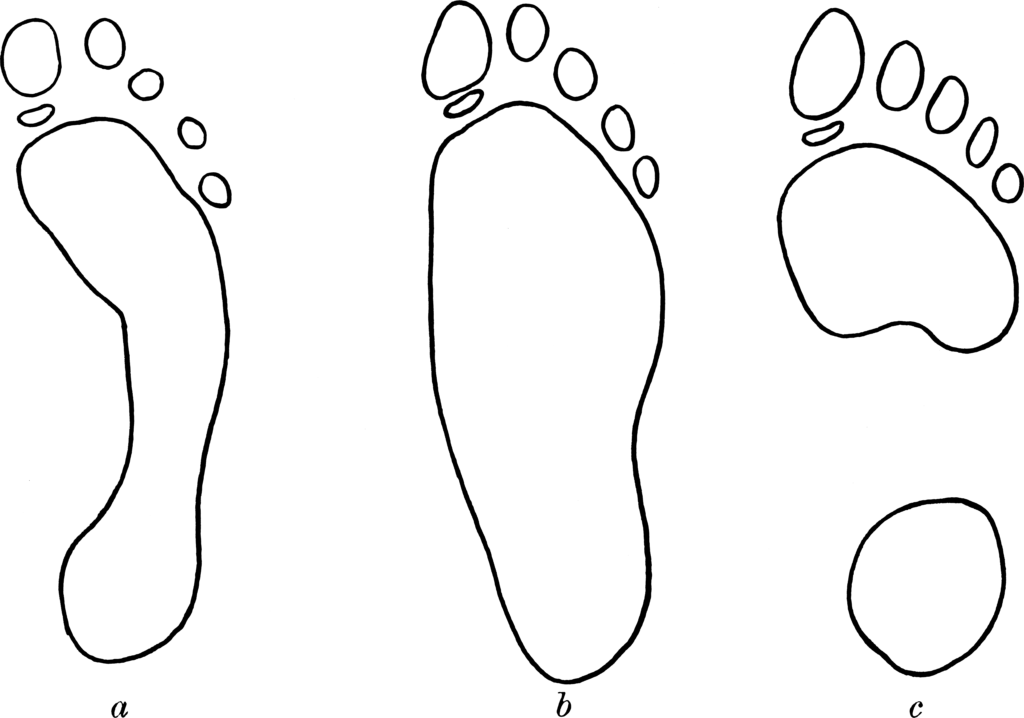
The highest of arches even have a difficult time keeping the first metatarsal head (big toe base) down on the ground, curling the toes instead. This action helps keep the foot contacting the ground.
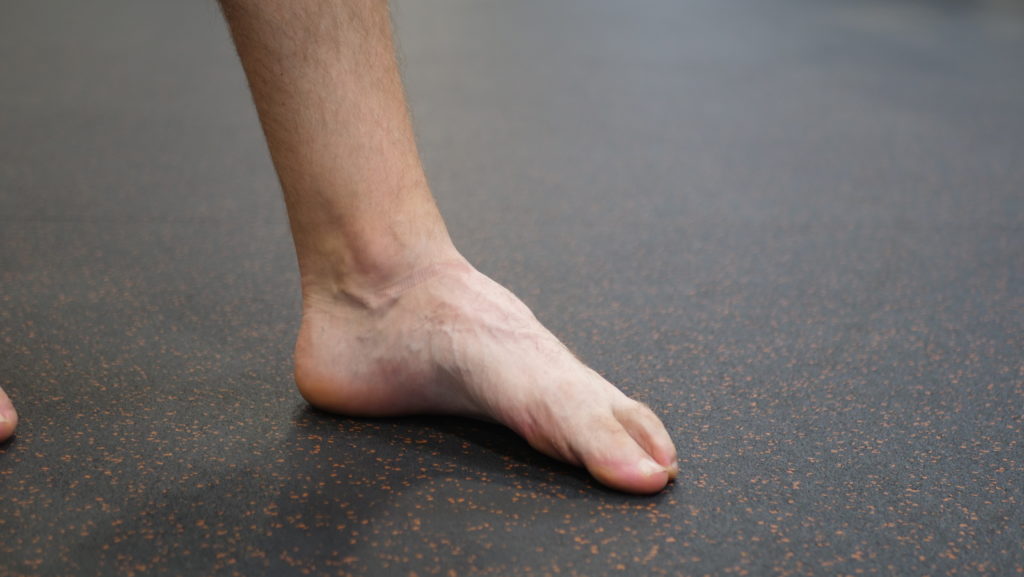
Under normal circumstances, foot supination is combined with external rotation occuring throughout the leg. This action should be seen in both the early and late phases of the gait (walking) cycle.
Conversely, foot pronation (flattening) creates more internal rotation, predominately during midstance.
Now although this particular foot arch is structurally high, it should allow for some pronation to occur.
What if foot dynamics are reduced, however?
In this case, you will likely see a presentation that has “normal” to excessive external rotation-based measures (flexion, abduction, and external rotation) and a loss of internal rotation-based measures (extension, adduction, and internal rotation). Straight leg raise is also commonly limited, which is an external rotation measure in the early ranges.
Gait-wise, these peeps will not have much ankle dorsiflexion (shin bone moving forward), and will often spin the foot outward to deal with the mobility deficit.
Up the chain, you’ll often see a pelvis that is translated forward (swayback posture) and knee hyperextension is quite common.
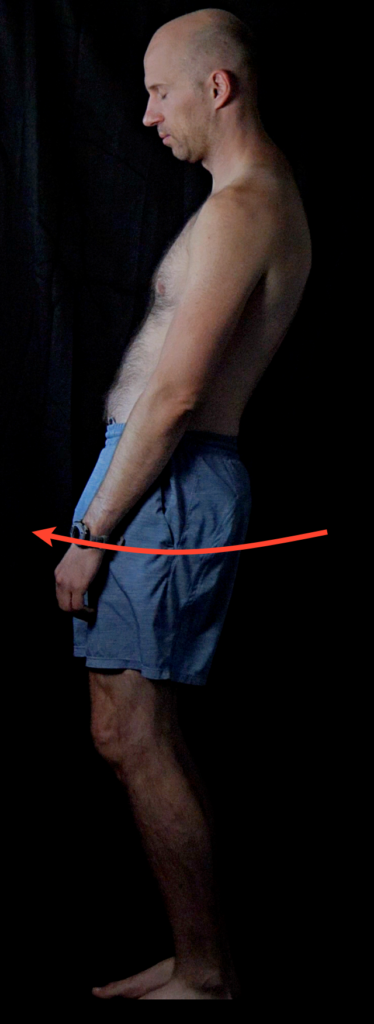
So what? Why does the ability to pronate matter?
Well, if the foot cannot pronate, the leg doesn’t absorb landings nor put force into the ground all that well. Motion loss here limits the force distribution across the foot. Though the research on if this foot type increases specific injury risk is mixed.
Although these feet are oftentimes very stiff, there is a way to increase their mobility. That way involves improving the way the foot contacts the ground
Training foot contacts in high arched feet
If the goal is to drive pronation in this foot, then we have to look at what points on the foot contact the ground during pronation.
As we walk (though there are individual differences), we generally initially contact the ground with the lateral (outside) aspect of the heel.
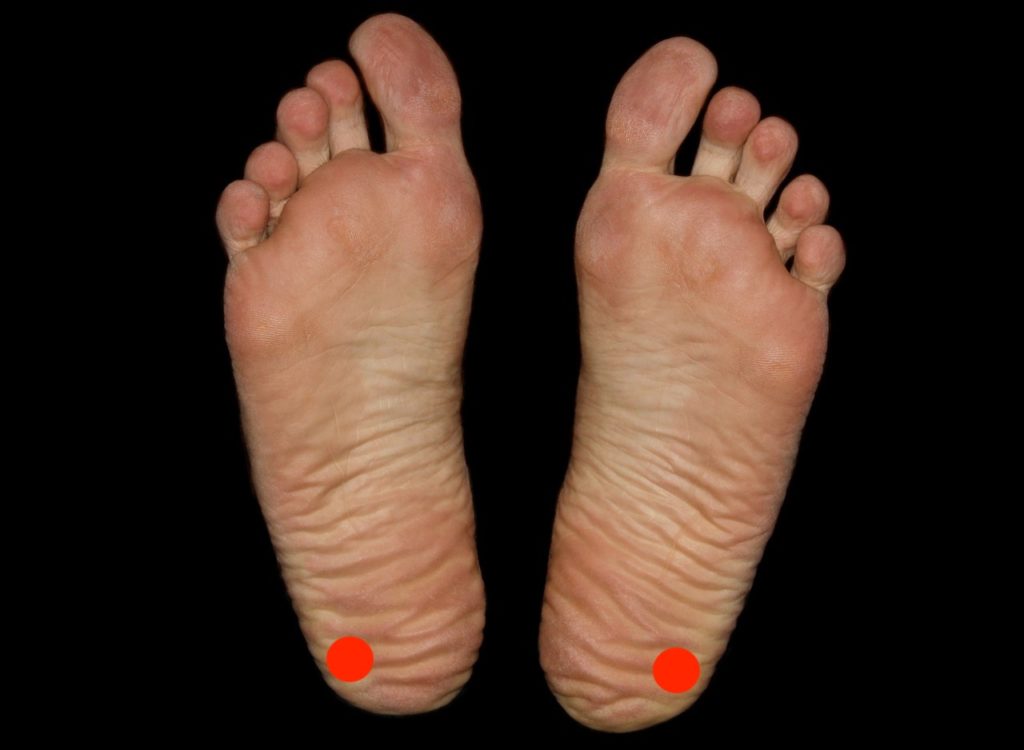
As we move through midstance, this contact shifts to the medial heel, producing calcaneal (heel) eversion (flattening). This motion causes a normal twist in the foot bones that allows the arch to flatten, then transition weight toward the first metatarsal head.
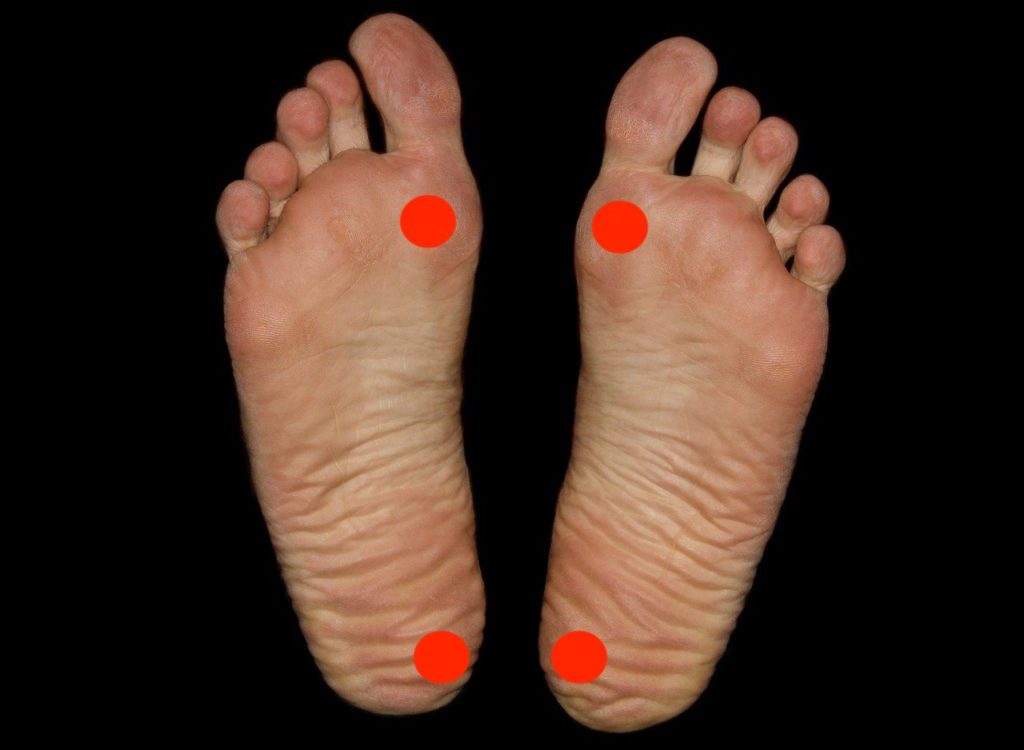
Midstance then transitions to late stance as we go up on the big toe.
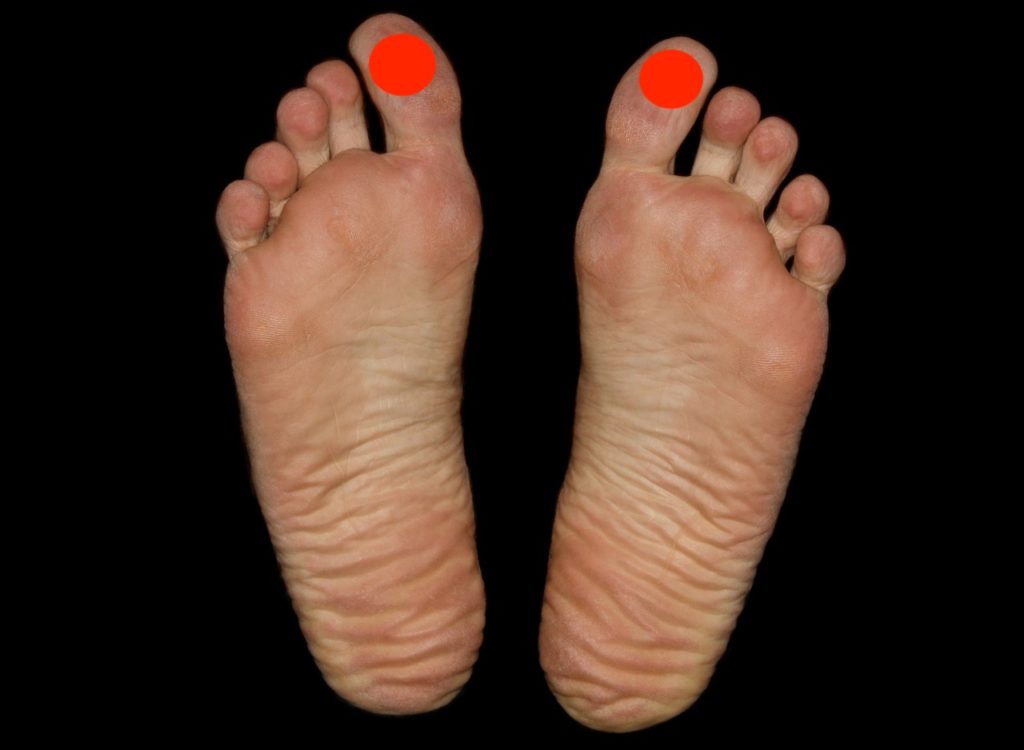
Since pronation occurs during midstance, being able to contact the medial calcaneus and first metatarsal head = HUGE for pronation gains.
But Houston, we have a problem.
The high arched foot often cannot contact these points. In fact, what if your first metatarsal head doesn’t even touch the ground?!?! YIKES! What are we to do?
Guess who’s glad you asked? THIS GUY!
Aside from mom and dad (JERKS!), why is it that the arch is high? To touch the ground. The foot has to bend in order to contact the ground.
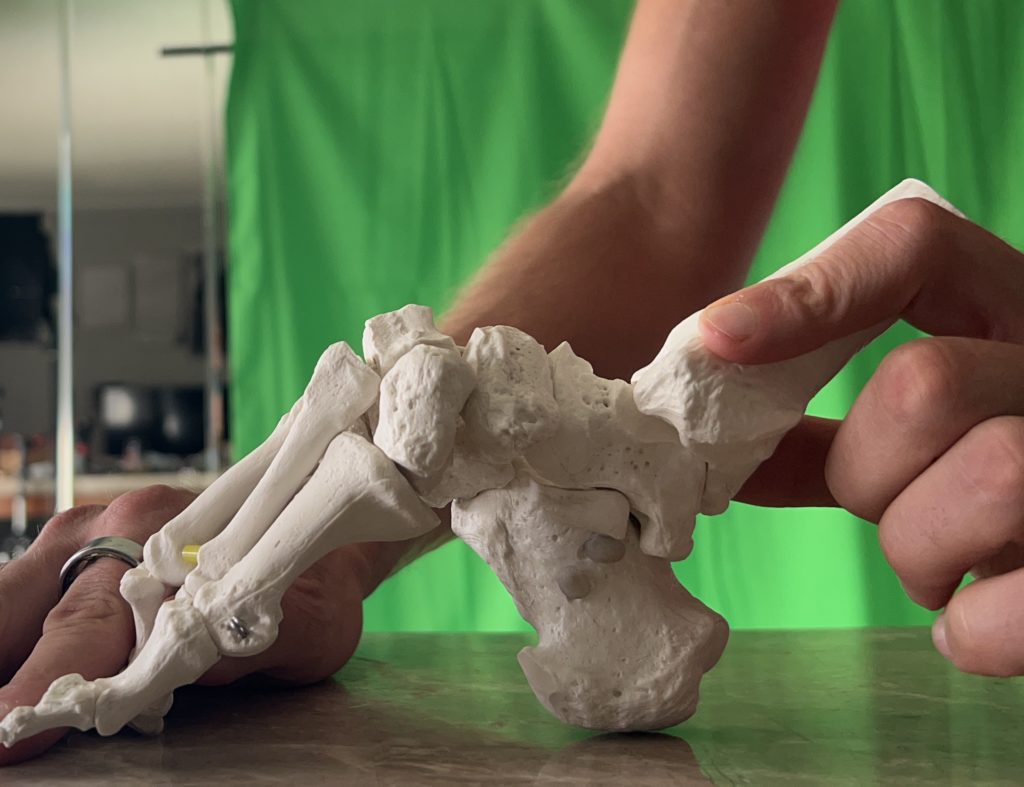
If we want to minimize the bend, then we have to somehow shorten the distance between the heel and the forefoot.
For this, I use heel-only elevation.

My client Ian Katenec gave me this idea, but if I slightly raise the heel up, I’ve now shortened the distance between the toes and the heel. This combined with the elevated surface shifting the weight towards the forefoot potentially allows the first metatarsal head to touch the ground, allowing the first ray to dorsiflex and the arch to flatten.
I say potential because if the heel lift is too high, the big toes will end up extending, first ray will plantarflex, and the arch will not flatten.

To achieve this goal, I’ll use the following tools:
- Small weight plates (2.5#-5# pending your brand)
- Small book
- Sticky note stack
This strategy is different from elevating the entire foot on a wedge, as here we are keeping the distance the toes have to travel the same, only changing the ground inclination.
Now you can’t just put a sticky note under your heel and expect the angels to sing. Remember, this foot type also has an internal rotation loss up the chain. We need to do something about that
Restoring pronation and internal rotation in the high arched foot
As stated before, high arched feet are often associated with a swayback posture (pelvis translated forward).
To address this strategy and improve internal rotation, I’ll use a wall push hip hinge:
Keys to this move are:
- Unlocking knees
- Keeping weight through the inside heel and big toe base (with plates under heels)
- Hips back + chest down
- Eyes look to the horizon
- Breathe – Silent in through the nose, soft slow exhale (lower abs smaller)
Once you’ve done this, you’ll want to teach these peeps to extend the hip and pronate the foot without translating the pelvis forward.
I’ve found two moves, focusing on the same foot cues above, help with this.
First is a quadruped on elbows short range hip extension:
I’ll follow this with a wall stride with the plate elevation:
Sum up
If you can nail these keys, the feet will drop, mobility will improve, and you ought to drive a lot more force into the ground with your high-arched supreme clientele.
To summarize:
- High arches are a foot bend to get toes to contact the ground
- Often these foot types have a loss of foot pronation and internal rotation
- Keys for improving mobility involve elevating the heels only, hinging the hips back, and driving hip extension
What struggles have you had with this foot posture? Comment below and let the fam know
image credits
https://upload.wikimedia.org/wikipedia/commons/e/ed/Charcot-marie-tooth_foot.jpg

